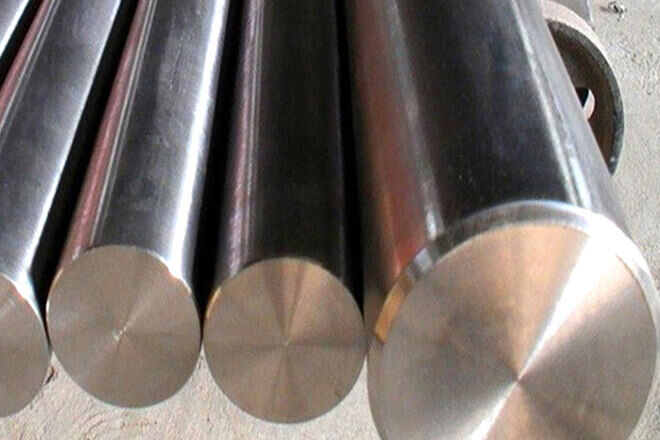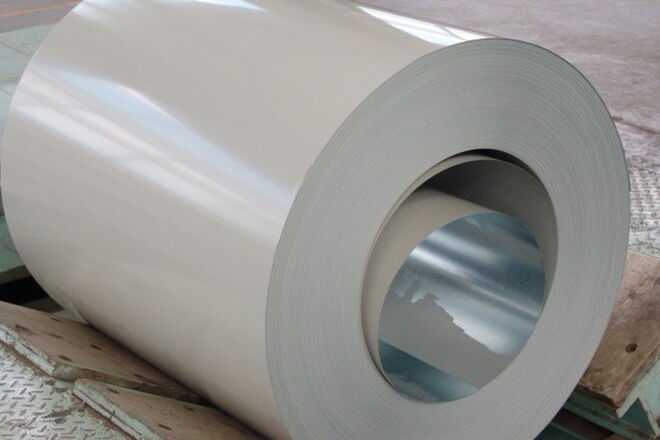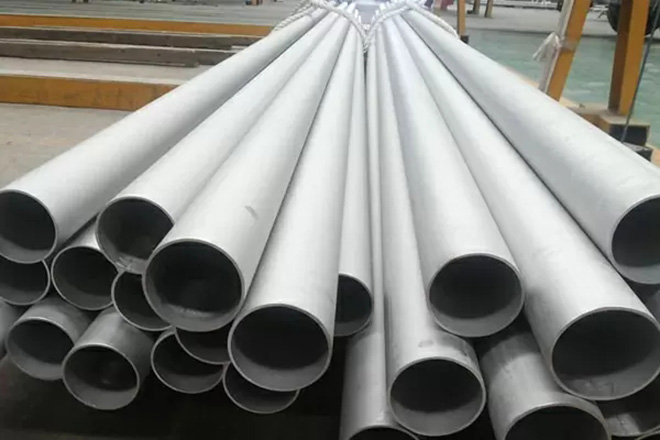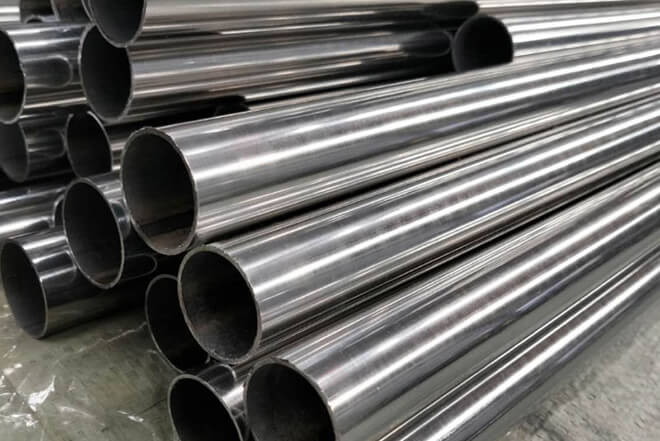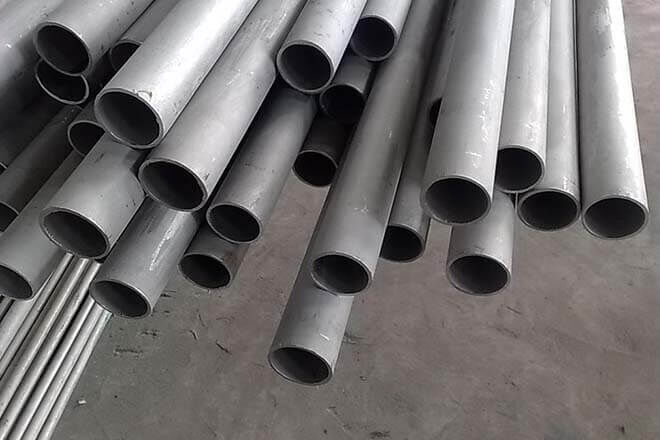- Rich export experience
- 24/7 Hours Service
- Ready to Ship!
Stainless steel round bar/rod has excellent corrosion resistance and high temperature strength,usually used for structural material and decorative material,It has two kinds of surface:bright surface and black surface.The bright surface looks more smooth and beautiful than black surface.
The stainless steel round rod is widely used in the areas such as stainless steel fasteners,chains.kitchen and sanitary wares,furniture handles,handrail,electroplating and lelectrolyzing pendants,food,petroleum,construction and decoration,etc.It is also can be used for electronic products parts,medical appliances,springs,bus inside and outside packing and building,street lamp posts,table-wares,bolts,nuts,screen mesh,and so on.
The techniques for stainless steel round rod includes Hot-rolled, cold-drawn, Centerless Grinding, forged, etc.and the size ranges from different techniques.
The surface for stainless steel round bars contains bright and black,dues to the size and tech.But for black bars,it can be polished to bright surface.
The available grades for stainless steel round bar/rod including 201, 202, 301, 304, 321, 316, 316L. Special materials can be customized.
The available size for stainless steel round bar/rod is 8mm-114mm of diameter for hot-rolled bar.,and 115-500mm of diameter for forged bar.
304 Stainless Steel
Stainless steel 304 is an austenitic grade that can be severely deep drawn. This property has resulted in 304 being the dominant grade used in applications like sinks and saucepans.
304L Stainless Steel
Type 304L is the low carbon version of Stainless steel 304. It is used in heavy gauge components for improved weldability. Some products such as plate and pipe may be available as “dual certified” material that meets the criteria for both 304 and 304L.
Quick Detail
| Standard | ASTM A554, A249, A269 and A270, A312 |
| Outer Diameter | 6mm--219mm |
| Thickness | 0.25mm - 3.5mm |
| Length | 6m or as customer's request |
| Tolerance | a) Outer Diameter: +/- 0.2mm |
| b) Thickness: +/- 0.02mm | |
| c) Length: +/- 5mm | |
| Surface | 180G, 320G, 400G Satin / Hairline |
| 400G, 500G, 600G or 800G Mirror finish | |
| Application | Decoration construction, upholstery, industry instrument |
Chemical composition for 304 stainless steel alloys
| % | 304 | 304L |
| C | 0.0 - 0.07 | 0.0 - 0.03 |
| Mn | 0.0 - 2.0 | 0.0 - 2.00 |
| Si | 0.0 - 1.00 | 0.0 - 1.00 |
| P | 0.0 - 0.05 | 0.0 - 0.05 |
| S | 0.0 - 0.03 | 0.0 - 0.02 |
| Cr | 17.50 - 19.50 | 17.50 - 19.50 |
| Ni | 8.00 - 10.50 | 8.00 - 10.50 |
| Fe | Balance | Balance |
| N | 0.0-0.11 | 0.0-0.11 |
Corrosion Resistanc of Stainless Steel 304
Stainless steel 304 has excellent corrosion resistance in a wide variety of environments and when in contact with different corrosive media. Pitting and crevice corrosion can occur in environments containing chlorides. Stress corrosion cracking can occur at temperatures over 60°C.
Heat Resistance of Stainless Steel 304
Stainless steel 304 has good resistance to oxidation in intermittent service up to 870°C and in continuous service to 925°C. However, continuous use at 425-860°C is not recommended if corrosion resistance in water is required. In this instance 304L is recommended due to its resistance to carbide precipitation.
Where high strength is required at temperatures above 500°C and up to 800°C, grade 304H is recommended. This material will retain aqueous corrosion resistance.
Fabrication of Stainless Steel 304
Fabrication of all stainless steels should be done only with tools dedicated to stainless steel materials. Tooling and work surfaces must be thoroughly cleaned before use. These precautions are necessary to avoid cross contamination of stainless steel by easily corroded metals that may discolour the surface of the fabricated product.
Cold Working of Stainless Steel 304
Stainless steel 304 readily work hardens. Fabrication methods involving cold working may require an intermediate annealing stage to alleviate work hardening and avoid tearing or cracking. At the completion of fabrication a full annealing operation should be employed to reduce internal stresses and optimise corrosion resistance.
Hot Workin of Stainless Steel 304
Fabrication methods, like forging, that involve hot working should occur after uniform heating to 1149-1260°C. The fabricated components should then be rapidly cooled to ensure maximum corrosion resistance.
Heat Treatment of Stainless Steel 304
Stainless steel 304 cannot be hardened by heat treatment.
Solution treatment or annealing can be done by rapid cooling after heating to 1010-1120°C.
Machinability
Stainless steel 304 has good machinability. Machining can be enhanced by using the following rules:
Cutting edges must be kept sharp. Dull edges cause excess work hardening.
Cuts should be light but deep enough to prevent work hardening by riding on the surface of the material.
Chip breakers should be employed to assist in ensuring swarf remains clear of the work
Low thermal conductivity of austenitic alloys results in heat concentrating at the cutting edges. This means coolants and lubricants are necessary and must be used in large quantities.
Welding of Stainless Steel 304
Fusion welding performance for Stainless steel 304 is excellent both with and without fillers. Recommended filler rods and electrodes for stainless steel 304 is grade 308 stainless steel. For 304L the recommended filler is 308L. Heavy welded sections may require post-weld annealing. This step is not required for 304L. Grade 321 may be used if post-weld heat treatment is not possible.
Applications of Stainless Steel 304
Stainless steel 304 is typically used in:
Sinks and splashbacks
Saucepans
Cutlery and flatware
Architectural panelling
Sanitaryware and troughs
Tubing
Brewery, dairy, food and pharmaceutical production equipment
Springs, nuts, bolts and screws


